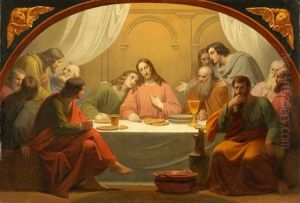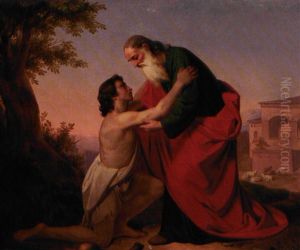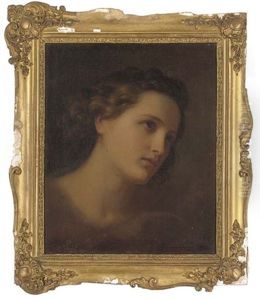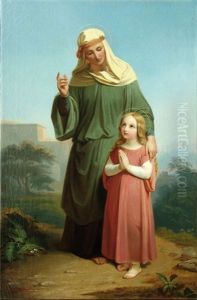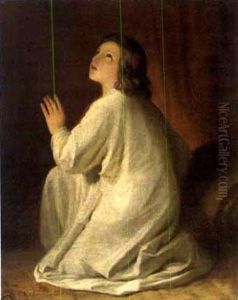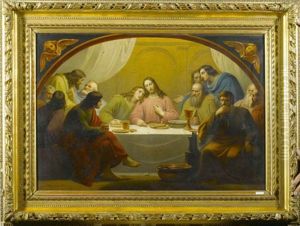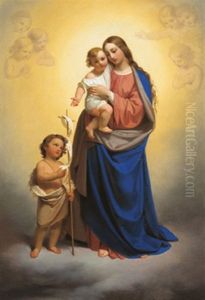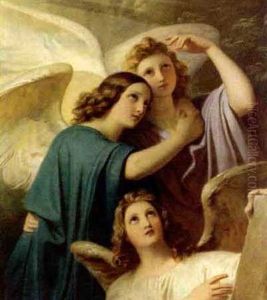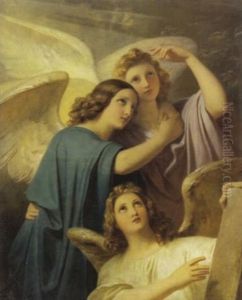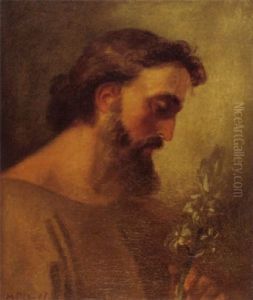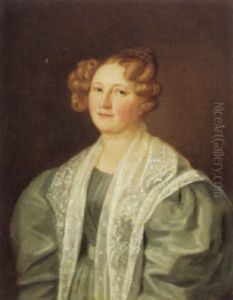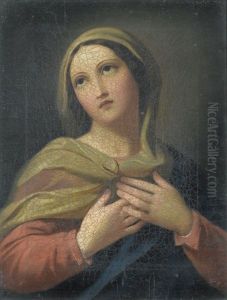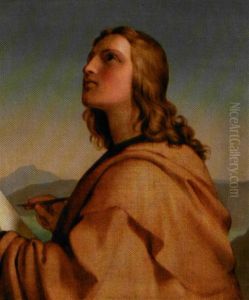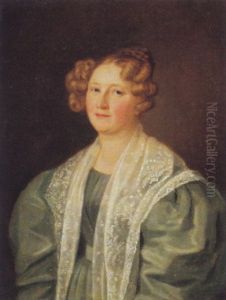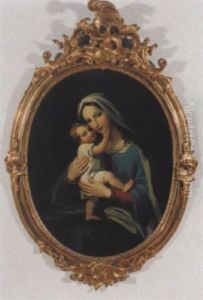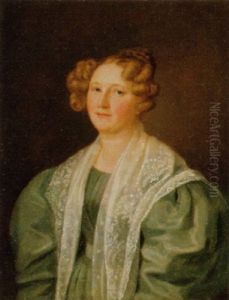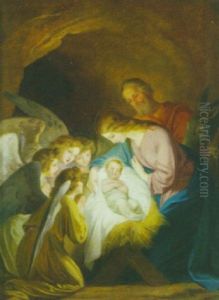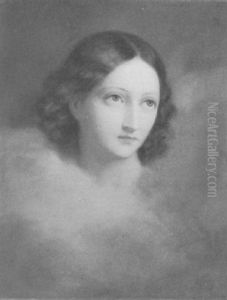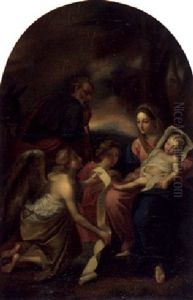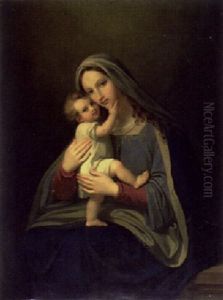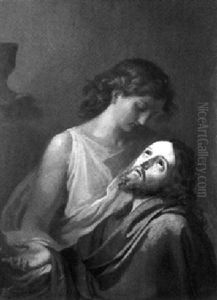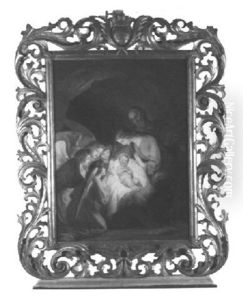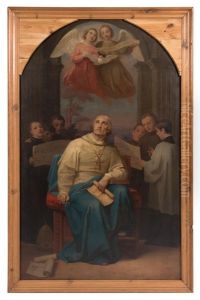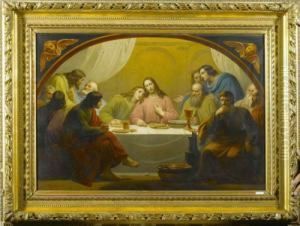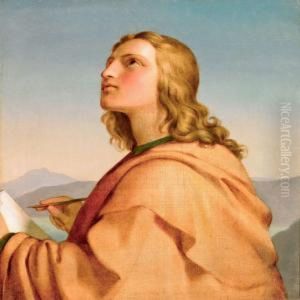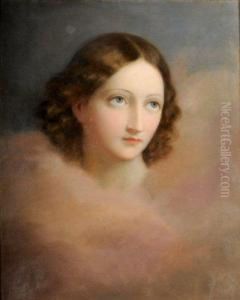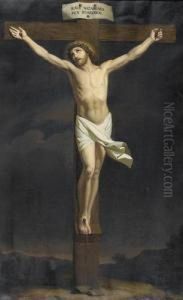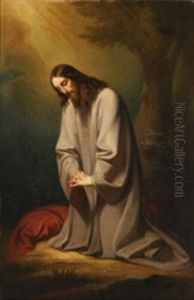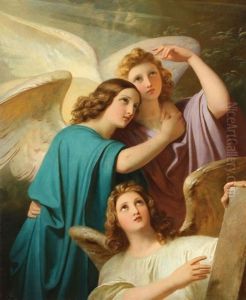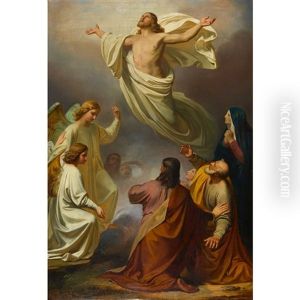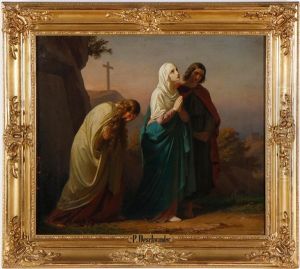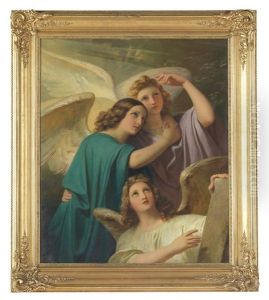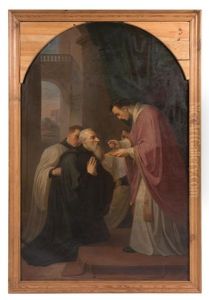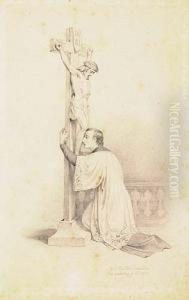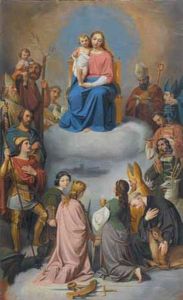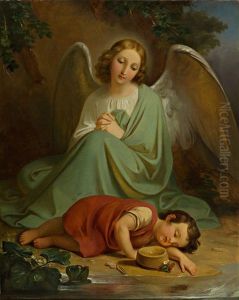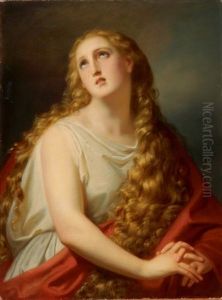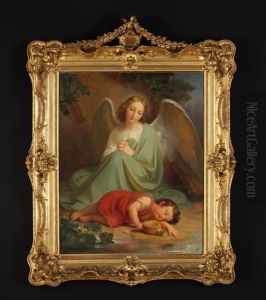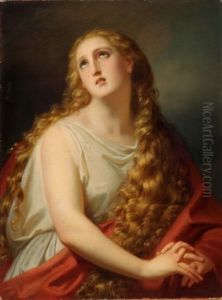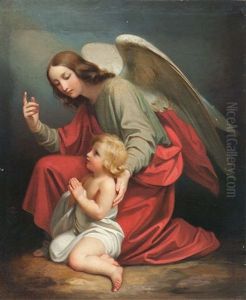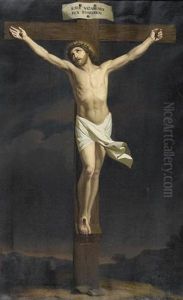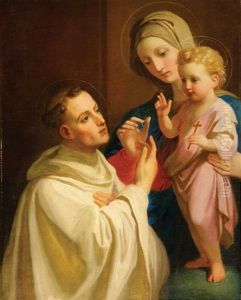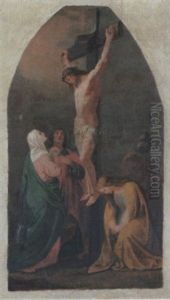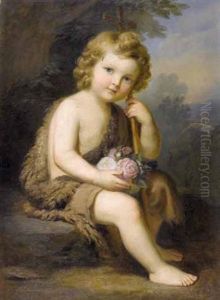Melchior Paul Von Deschwanden Paintings
Melchior Paul von Deschwanden was a Swiss painter, born on February 18, 1811, in Stans, Switzerland. He is known for his religious compositions and was one of the most prolific Swiss artists of his time. Deschwanden's works were primarily influenced by Nazarene movement, which sought to revive the spirituality and simplicity of medieval art.
Deschwanden initially trained under his father, who was a minor artist, before moving to study in Munich in 1830. There, he was influenced by the works of Peter von Cornelius and Heinrich Maria von Hess, prominent figures of the German Nazarene movement. Deschwanden's style was characterized by a focus on religious and historical subjects, with a particular emphasis on sentimentality and devotion.
Throughout his career, Melchior Paul von Deschwanden focused on creating altarpieces and religious paintings for churches and chapels. His works were commissioned by both Catholic and Protestant patrons, reflecting the ecumenical appreciation of his art. Despite the 19th century being a period of rapid industrialization and modernization, Deschwanden's art retained a traditional, conservative style that appealed to a wide audience in Switzerland and abroad.
He taught at various institutions and influenced a number of students who would carry on his artistic legacy. Deschwanden's work was part of the painting event in the art competition at the 1948 Summer Olympics. Although not as well-known today, during his lifetime he was a respected figure and his paintings can still be found in various churches and collections across Europe.
Melchior Paul von Deschwanden died on February 10, 1881, in Stans, just a few days shy of his 70th birthday. His commitment to religious art and the revival of medieval aesthetics left a mark on Swiss religious art and contributed to the 19th-century artistic discourse on the role of spirituality and tradition in the rapidly modernizing world.
